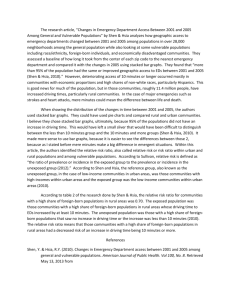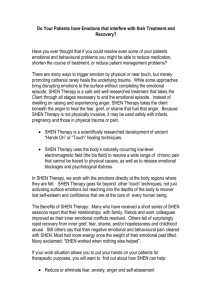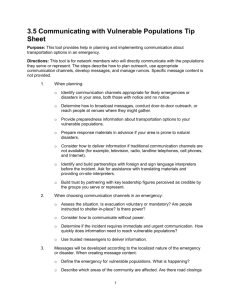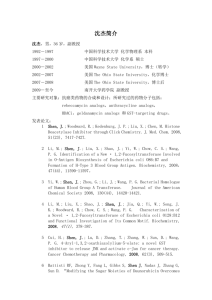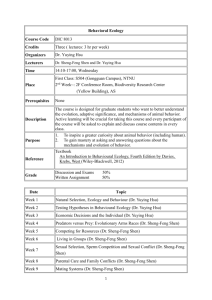Interpreting Relative Risk
advertisement
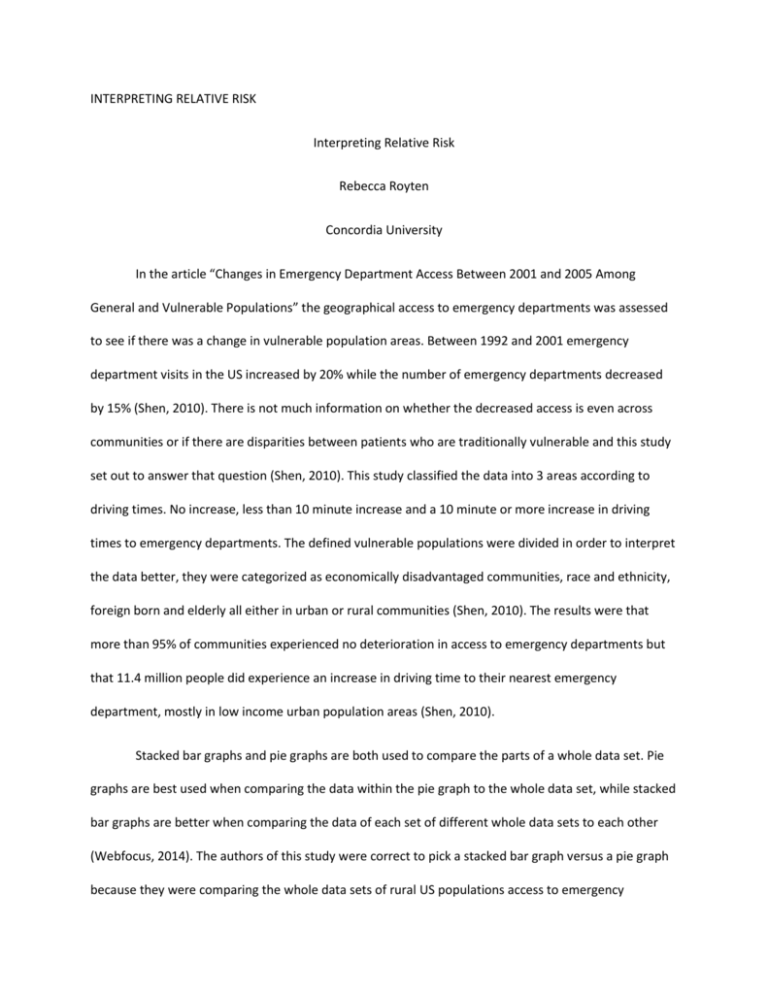
INTERPRETING RELATIVE RISK Interpreting Relative Risk Rebecca Royten Concordia University In the article “Changes in Emergency Department Access Between 2001 and 2005 Among General and Vulnerable Populations” the geographical access to emergency departments was assessed to see if there was a change in vulnerable population areas. Between 1992 and 2001 emergency department visits in the US increased by 20% while the number of emergency departments decreased by 15% (Shen, 2010). There is not much information on whether the decreased access is even across communities or if there are disparities between patients who are traditionally vulnerable and this study set out to answer that question (Shen, 2010). This study classified the data into 3 areas according to driving times. No increase, less than 10 minute increase and a 10 minute or more increase in driving times to emergency departments. The defined vulnerable populations were divided in order to interpret the data better, they were categorized as economically disadvantaged communities, race and ethnicity, foreign born and elderly all either in urban or rural communities (Shen, 2010). The results were that more than 95% of communities experienced no deterioration in access to emergency departments but that 11.4 million people did experience an increase in driving time to their nearest emergency department, mostly in low income urban population areas (Shen, 2010). Stacked bar graphs and pie graphs are both used to compare the parts of a whole data set. Pie graphs are best used when comparing the data within the pie graph to the whole data set, while stacked bar graphs are better when comparing the data of each set of different whole data sets to each other (Webfocus, 2014). The authors of this study were correct to pick a stacked bar graph versus a pie graph because they were comparing the whole data sets of rural US populations access to emergency departments to urban US populations access to emergency departments (Shen, 2010). By using a stacked bar graph it is easy to compare segments of each whole to each other which makes the difference between rural and urban populations that are more than 30 minutes from an emergency department visually obvious. In regards to the relative risk of low income communities in urban areas the unexposed population or reference group is the high income communities which are the upper third per capita income of the distribution estimated for urban areas (Shen, 2010). The exposed population is the low income communities in urban areas which are the lower third per capita income of the distribution estimated for urban areas (Shen, 2010). The unexposed population for the relative risk of foreign born population in rural areas is the low share and the exposed population for the relative risk of foreign born population in rural areas is the high share (Shen, 2010). The value of this risk ratio is 0.70, which means that high share foreign born population is 0.70 times more likely to face increased driving time by at least 10 minutes to the nearest emergency department than low share foreign born populations. This may seem like a low relative risk ratio but we must take into consideration that foreign born populations have been shown to have poorer health and less access to health care in the first place (Shen, 2010). Foreign born adults are more likely to be without a usual source of health care compared to US born counterparts (Dey, 2006). Access to care for immigrant adults is a major problem in a disproportionate degree than US adults (Dey, 2006). This being the case foreign born populations may have not been affected by a decrease in emergency departments because they had lower access to care originally. Dey, A., Lucus, J. March 2006. Physical and mental health characteristics of U.S. and foreign born adults. Advanced Data from Vital and Health Statistics. Number 369, March 2006. Shen, Y., Renee, H. August 2010. Changes in emergency department access between 2001 and 2005 Among general and vulnerable populations. American Journal of Public Health. Vol 100, No.8 Webfocus. 2014, Selecting a graph type and style. Retrieved from http://www.csueastbay.edu/FOCUS/wf761doc/ibi_html/javaassist/intl/EN/help/topic247.htm
